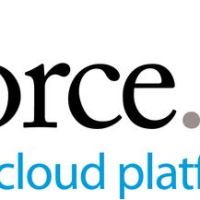The technological differences between Virtual Private Servers and Private Cloud have caused quite some confusion in the IT industry.
The lack of awareness about these two web hosting technologies contributes to the confusion.
However, before we explain the major differentiating factors, first, let us give you a brief about both.
Introduction to Virtual Private Server
Also known as, Virtual Dedicated Server (VDS) a Virtual Private Server (VPS) appears as a dedicated server.
However, it is installed on a computer that serves multiple websites. Interestingly, a single computer can play host to several virtual servers, with each one having its own operating system that runs the hosting software for any user.
Also, each server can be individually rebooted and booted.
Introduction to Private Cloud
Also known as Virtual Machine (VM) or IaaS (Infrastructure as a Service), Private Cloud is also based on Virtualization and comes with many advantages.
Presently, it is termed as one of the most top-of-the-line website hosting solutions available.
Also, this technology has already been adopted at a rapid pace in a short time. Any website hosted on the Cloud is highly available, meaning the hosting resources of each website is imitated on every Cloud server in the bunch.
To put in simple words, website hosting services like SFTP, SSH, FTP and mail services, etc. are run on many different servers concurrently through Cloud.
Difference Between Virtual Private Server and Private Cloud
| Feature | Virtual Private Server | Private Cloud |
|---|---|---|
| Server Setup | It is a single physical server that is split between restricted number of users. With a similar hosting set-up like Shared server, it also has many user accounts located on the same server. | Private Cloud, uses disseminated resources across several physical servers. This allows a seamless transition to other connected servers in the network in case of hardware failure or any other major issue. |
| Location of the Hardware | VPS is usually hosted at off-site, third-party web hosting provider. | Private Cloud is situated in the data center or site the user owns. However, some Cloud providers also offer hosted private clouds to their users. |
| Scalability | With VPS, the user could upgrade to any service manually or can also send in a support ticket to the service provider. | Private Cloud control panels are built keeping in mind deployment and quick provisioning. With just a few clicks through the admin panel, the user can get a new database, Virtual Server or any other resource. |
| Cost | VPS is less expensive than dedicated server hosting. So, if someone is low on budget, VPS is the sure shot answer for them. | In terms of hardware, a Private Cloud is more expensive than VPS as the user needs to shoulder the cost of maintenance, set-up, installation, and cost of the hardware. |
How to Make the Selection between VPS & Private Cloud
| Server Model | Main Advantages | Best Suited for | Pricing |
|---|---|---|---|
| Virtual Private Server | Cost efficient and has a broad range of pre-configured servers. | Predictable traffic websites | Hourly (rare) or Monthly |
| Cloud Server | Freely scalable server and advanced automated redundancy. | Anything and Everything | Hourly as per the use |
We hope the comparison and points mentioned above have helped clarify the differences between the Private Cloud and Virtual Private Servers.
Private Cloud has come a long way and become a superior choice in almost all use cases.
However, to sum it up, the choice between the two is a matter of preference and depends on the needs and budget of the user.

![Beginner’s Guide to Amazon Web Services [Infographic]](https://technicallyeasy.net/wp-content/uploads/2015/08/infographic-aws-beginners-guide-200x200.png)





![What Does the Zettabyte Mean for Cloud Security? [Infographic]](https://technicallyeasy.net/wp-content/uploads/2013/06/2016-year-of-the-zettabyte-200x200.jpg)
